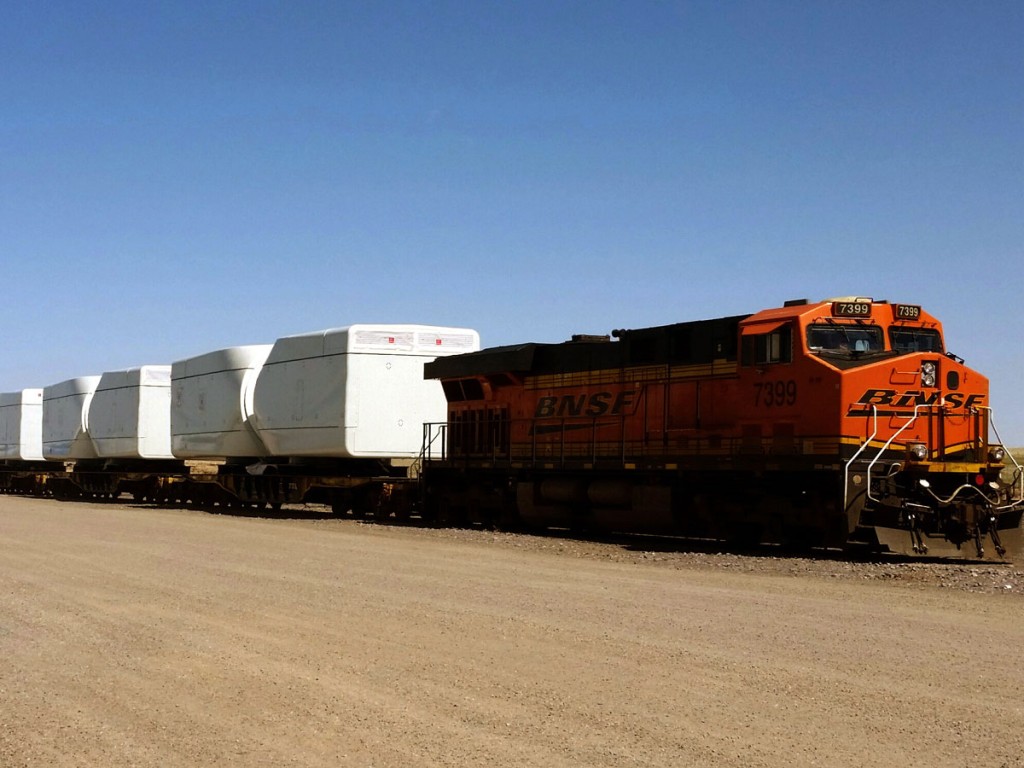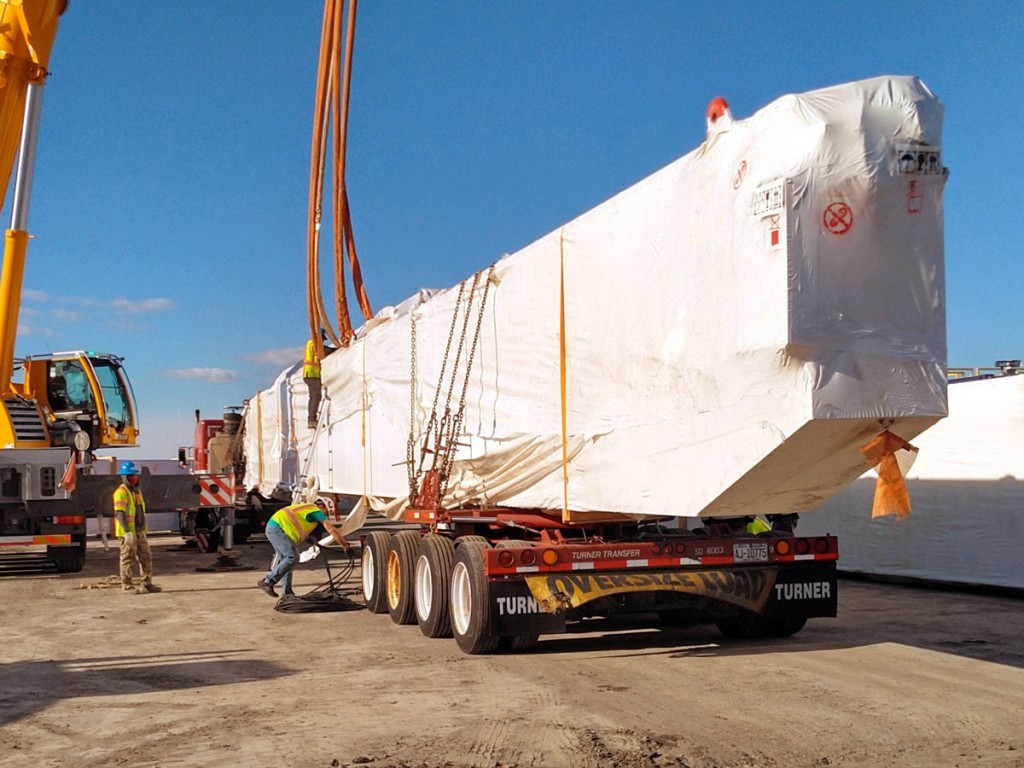
As the world begins to emerge from the COVID-19 pandemic, third-party logistics leaders are turning to time-honored approaches entailing collaborative planning and innovative solutions to meet such present challenges as skyrocketing freight rates and tight truck capacity in keeping project and breakbulk cargo shipments moving.
For BNSF Logistics LLC’s Robert Sutton, communication and transparency are seen as critical to planning and execution of efficient shipment of oversize units, while Thunderbolt Global Logistics LLC’s Jim Shapiro optimistically sees moving of outside-the-box cargos as potentially an easier feat than shipment of containers in the current industry environment. Each shared insights with AJOT in separate interviews.
Sutton, executive vice president of innovation for Dallas-headquartered BNSF Logistics, noted that the rapid rise of rates for ocean transport – particularly from Asia – of not just international containers but also breakbulk freight is beginning to have a downward impact on U.S. project activity.
“We are starting to hear we’ll see shifts in sourcing strategies and/or projects being delayed,” said Sutton, who has a quarter of a century of industry experience, including 18 years with the Burlington Northern Santa Fe LLC third-party logistics subsidiary. Such sourcing shifts may include importing wind energy units from Europe rather than Asia.

BNSF Logistics, which annually handles thousands of wind energy components for customers, has found costs for trans-Pacific shipments as much as tripling from pre-pandemic rates. The ocean cost for moving a set of wind energy blades which had been $60,000 is now between $120,000 and $180,000, he said. And, once project shipments get to ports, they face similar challenges as containers, including labor shortages and constrained truck capacity.
Shapiro, director and owner of Baltimore-based Thunderbolt Global Logistics, said that, while demand for trucking continues to outstrip supply of drivers and costs have increased across all transport modes, “We have found it’s sometimes easier to deliver a 50,000-kilogram [55-ton] wooden crate from any port compared to delivering a 40-foot container.
“With proper planning, we have not had too many problems with multi-axle domestic moves,” Shapiro said, adding that truckers handling breakbulk and project cargo are busy but are not reporting that they are booked out for four to five weeks, as the case with those transporting containers.

Meanwhile, Shapiro said, the current shortage of semiconductor chips and some other parts used in making vehicles – and the concomitant decline in vehicle shipments – is opening up space on roll-on/roll-off vessels for static cargo moving on wheeled platform trailers. In contrast, he said, container carriers are charging extra-high rates for out-of-gauge cargo that would displace boxes from precious slots on full containerships.
“It’s a challenge with the container carriers because they are in the catbird seat right now,” Shapiro said. “Their ships are full all the time – even though on the export side they are full of empty containers to Asia. They aren’t so interested in oversize cargo.
“The lack of customer service from some of the ocean carriers has also been a big challenge, and it’s a hard one to solve,” Shapiro said, citing Atlantic Container Line as an exception, with a strong customer service team offering swift quotes for shipments on wheeled platform trailers.
BNSF Logistics’ Sutton also noted the competition for space on containerships, commenting, “In some instances, you’re fighting for the same capacity as containers.”
On the domestic side, Sutton said, working closely with supply chain providers is imperative and, whereas he remains hopeful of greater availability of truck capacity in 2022, rail is offering a favorable alternative to trucking as a way to get in front of lead times in many cases.
He added that rail is not subject to the challenges of differing state regulations for oversize shipments. Thus, an import shipment of wind or solar energy components may be loaded directly onto rail at the port of Galveston or Corpus Christi and head by train through multiple states to get the cargo most of the way to the installation site.

In addition, Sutton said, BNSF Logistics is deploying innovative solutions for moving out-of-gauge structures, including patented saddle fixtures designed to minimize swing-out of wind energy blades.
Ultimately, though, the same qualities that have proven beneficial for decades remain at the fore.
“Communication is key,” Sutton said. “Collaboration is key. Being transparent is key.”
Thunderbolt’s Shapiro concurred that long-trusted collaborative relationships with supply chain partners are now as crucial as ever. This cooperative effort may include using secondary ports of call to avert congestion and capacity issues that are hitting some larger seaports especially hard.
“We look at all alternatives when determining where to route cargo for our customers and overseas partners,” Shapiro said.
“At the end of the day, it’s still just freight,” added Shapiro, who already had 23 years of industry experience when he opened the doors of the Thunderbolt firm in January 2008. “We are all fighting the same battle every day. I do feel our operations staff is getting worn down by the daily obstacles they are facing. It’s not just here in the United States. It’s all over the world.
“Thankfully,” he said, “the ports have continued to operate during the pandemic, and the truck drivers are on the road picking up and delivering shipments of all sizes. We are grateful for everyone who is helping to keep the freight moving in this country and around the world. It’s not easy.”

Follow us on social media: